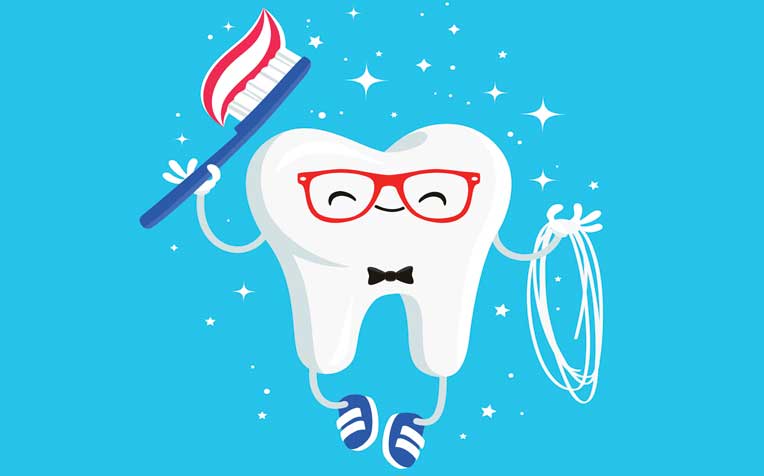
Make flossing an essential part of your oral health care routine.
Continue from previous page.
It may not be everyone’s favourite activity, but flossing is vital to good dental health.
Get the flossing technique right
Ms Kimberly Chim, Oral Health Therapist, National Dental Centre Singapore (NDCS), a member of the SingHealth group,explains the steps involved in flossing.
Front teeth
1. Cut an arm's length of floss and coil it around each middle finger.
2. Adjust the “active” length to between 4cm and 5cm for front teeth, and 10cm for back ones.
3. Using both hands, hold the floss with the thumbs and index fingers, and gently slide the floss between two teeth. Move it gently down in a sawing motion. Be careful not to push the floss aggressively down on the gum as it will hurt or traumatise the gum. Once between the teeth, curve the floss around the tooth and gently floss the sides of each tooth. This includes using the floss to scoopunder the gum line, where bacteria can reside.
Back teeth
4. Use a similar flossing technique for back teeth. Lengthen the floss, secure both ends with the middle fingers before using the index fingers to push the middle portion of the floss upwards to form a U-shaped curve. This is to help one manoeuvre it better. Repeat the earlier steps of sliding the floss between teeth and gently scooping under the gum line.
5. Do one gap at a time, and use a fresh section of floss for each gap. When flossing is done properly and gums are healthy, there should be no bleeding.

Take your pick of flosses
Tufted dental floss
Good for cleaning braces, bridges and dental implants, it has three sections: a stiffened portion to guide it into gaps or under dental appliances; a fluffy, spongy section, which looks thick but easily contracts and expands to clean around appliances and in wide spaces; and regular floss to remove plaque under the gum line.
Regular floss
It is not as thick as tufted dental floss. It is available waxed and unwaxed, with waxed being more popular as it is easier to use. Waxed floss does not splay or split easily when going over rough edges, compared to unwaxed ones. Dentists tend to use waxed floss in their clinics.
Flavoured floss
Gimmicky – they come in strawberry, mint and other flavours, offering a pleasant experience rather than anything medically significant.
Whitening floss
Whitening floss does not bleach teeth but gives the illusion of whitening because it is coated with microscopic abrasives that will effectively remove particles between teeth for a cleaner and brighter look. It works differently from professional whitening, and does not work any better than regular floss.
Floss holder
It is an F- or Y-shaped holder for a piece of floss. Meant for beginners, young children and those with limited finger dexterity, it is not recommended for those with misaligned teeth. Although different in form from regular floss, the flossing technique remains the same. There may be a toothpick at one end, but exercise caution, as clumsy use of toothpicks can hurt gums.
Ref: R14
Contributed by


















 Get it on Google Play
Get it on Google Play